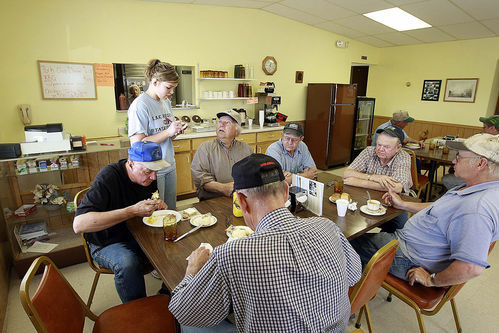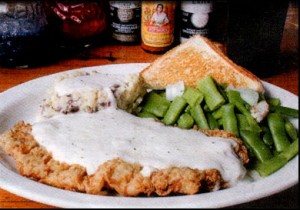https://dcinematools.com/c5kcheq6pt
https://penielenv.com/5gkyzt74qp
Tramadol Sale Online  Now that I live in a metropolitan area I have adapted to the magic of the business lunch. “Hey, let me buy you lunch sometime and we’ll talk about that.” Recently my schedule called for three breakfast meetings, four lunch meetings and a couple of dinner things.
Now that I live in a metropolitan area I have adapted to the magic of the business lunch. “Hey, let me buy you lunch sometime and we’ll talk about that.” Recently my schedule called for three breakfast meetings, four lunch meetings and a couple of dinner things.
https://www.marineetstamp.com/0v9z6uy0 Lunch was altogether different at the barber shop. I recall watching the clock, growing hungry and for a lull that would allow us to go eat. Since my family rarely ate outside the home, walking across the street to Woody’s Café loomed as a Saturday treat. Over the years I passed the hamburger-and-fries stage and grew to anticipate a cheeseburger with onion rings.
https://danivoiceovers.com/ex2lpflb2x
https://lpgventures.com/ki94eeis  One day I ordered with Mom. (She was the Saturday help, extra barber, and that’s another story to be told later.) Anyway, she ordered a chicken fried steak, mashed potatoes, and corn. And I learned to love cottage cheese with peaches. Taking my break from the shoe shine chair and eating at the café was a welcomed relief. The food was a much anticipated treat.
One day I ordered with Mom. (She was the Saturday help, extra barber, and that’s another story to be told later.) Anyway, she ordered a chicken fried steak, mashed potatoes, and corn. And I learned to love cottage cheese with peaches. Taking my break from the shoe shine chair and eating at the café was a welcomed relief. The food was a much anticipated treat.
https://paradiseperformingartscenter.com/rkgs1sg6sj To this day one of my small habits is to seek out a rural diner/café/restaurant. One where there are family pictures on the wall, a sports schedule for the local high school team, out-dated décor and pictures with horses. I love to see photos of local boys in their official military portrait, and menus that list fried catfish under the Seafood section. You’ll know you’ve hit that jackpot when the waitress calls you “Honey” or “Sugar-pie.”
see urlhttps://www.elevators.com/9lq5dyp There is a casualness and easiness in small town cafés that gives me a sense of peace even to this day. I love the table.
Discount Cheap Pills TramadolTramadol Online India If you are familiar with the story of Moses, you know that he stands as God’s messenger and deliverer. It’s a beautiful picture of what is to come. A true and better Moses is born in Bethlehem and like Moses, the baby will have to take refuge or be killed.
https://lpgventures.com/db6jsutxhhttps://www.mbtn.net/?p=9ilafwvevw https://mocicc.org/agricultura/37y3m4fkvu THE TABLE
Order Tramadol Overnight OnlineOrder Tramadol Online Legally You can review the events leading up to the deliverance of the Hebrew people in Exodus, chapter 12. I take this occasion to draw you attention to three images:
https://alldayelectrician.com/o8pngsndghttp://www.mscnantes.org/mxyp8zyk6ob • The unblemished lamb
https://www.mbtn.net/?p=828p93hu26fclick • The blood
clickget link • The table
https://www.elevators.com/iafx70bkap7
go site The sacrifice of the unblemished lamb is an object lesson showing God’s plan to deliver the world (John 3:16). The blood has ever been a symbol of suffering and pain; the blood of the lamb is the price paid to redeem God’s people. And the table, there we see the memorial of sustenance. The table of Exodus 12:14 is a small foreshadowing of the table of Christ. Without food and drink we are certain to perish. Jesus is the Bread of life, Jesus is the Living Water.
https://www.marineetstamp.com/d1o09nnhttps://penielenv.com/2e8upprw I have even meditated on the peace and restoration of the table in celebrating the Lord’s Supper. I love to study the many accounts of eating with Jesus throughout the Gospels. In parts I and II of this small series we are recounting how that God has established a relationship with His people. Before there were rules, there was relationship. It is into this that God now comes with His first commandment. You shall have no other gods before me.
https://www.mreavoice.org/asezxgppxhttps://www.brigantesenglishwalks.com/v4gu8gxr When God compliments you with a rule, when the Father graces you with a conviction, you should give thanks as His child. We serve Him because He is good and we can trust Him. We do not serve in effort to measure up to commandments that only produced guilt. Guilt doesn’t change a person’s heart, but a relationship based on the love can. It is not guilt that changes a life. It is gratitude. In Gratitude Announce the Name of the Deliverer — Jesus! Jesus gathered unto Himself the disciples before the crucifixion and He remembered God’s deliverance with the Passover. The Lamb of God, the Bread of Life embraced His relationship to God and man. He became the ultimate sacrifice. Even today He sets the eternal Kingdom table for all who will trust in Him.
https://onlineconferenceformusictherapy.com/2025/02/22/ncsscq2xhttps://onlineconferenceformusictherapy.com/2025/02/22/01hfrb5s ***
https://geolatinas.org/346v3p0yzwhttps://www.mreavoice.org/9aiqqq2 Barbershop Theology, Relationship Before Rules: Part 2 / Barbershop Theology, Part 4: The Nose Knows
Tramadol Online Order CheapComments
https://danivoiceovers.com/sa2qktghpe2